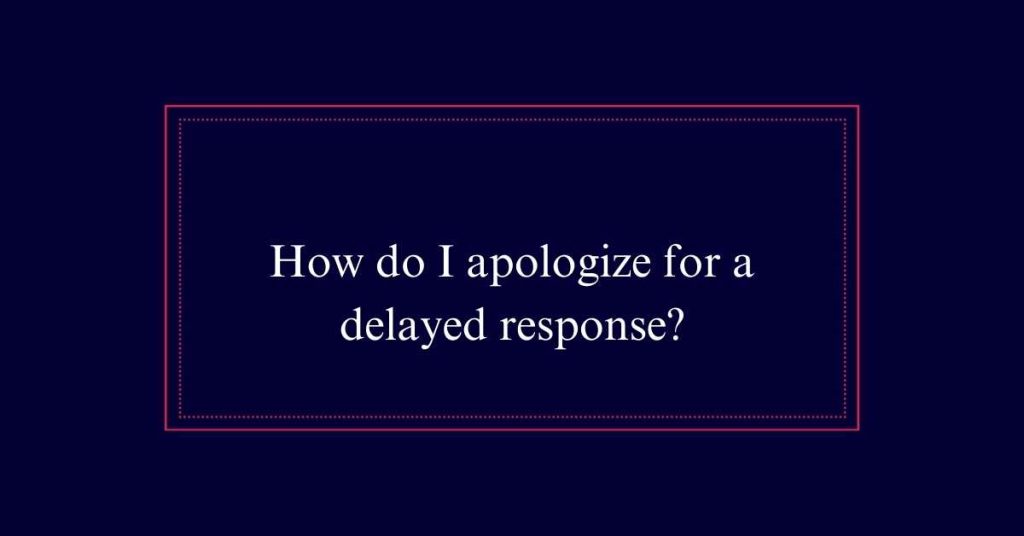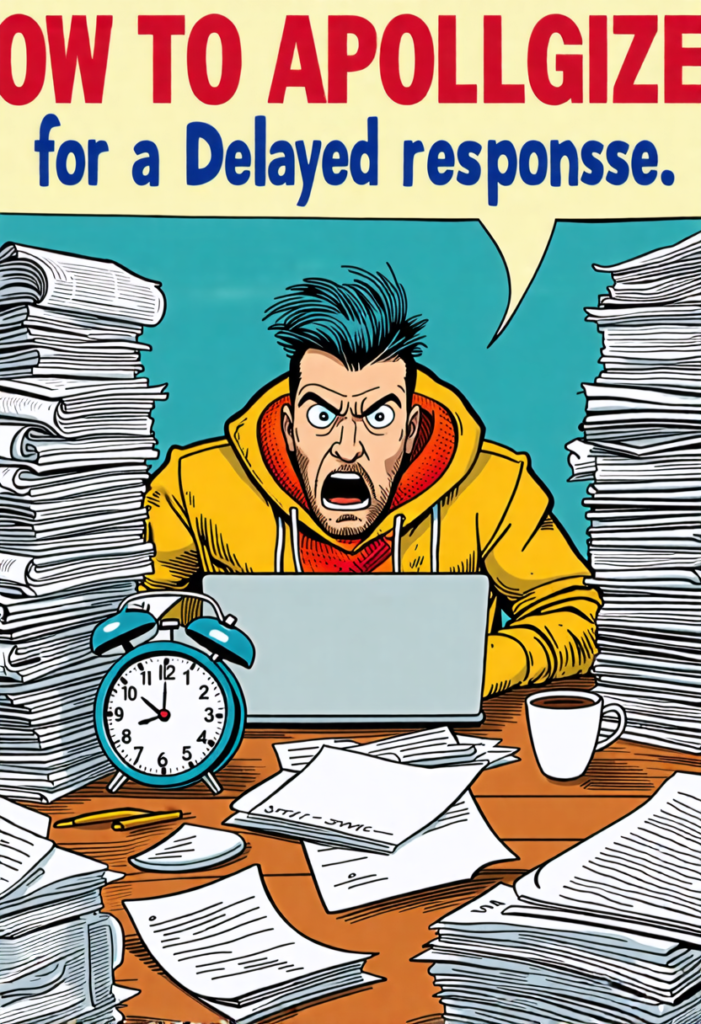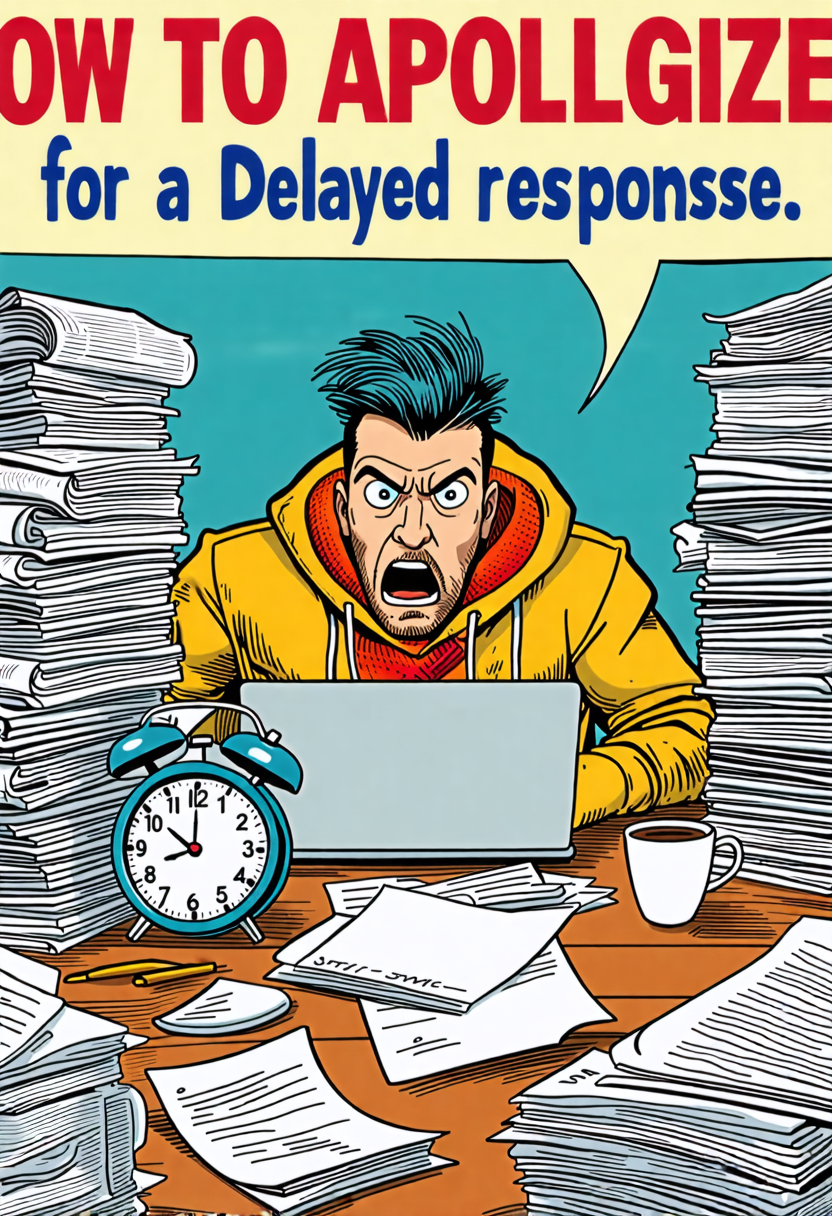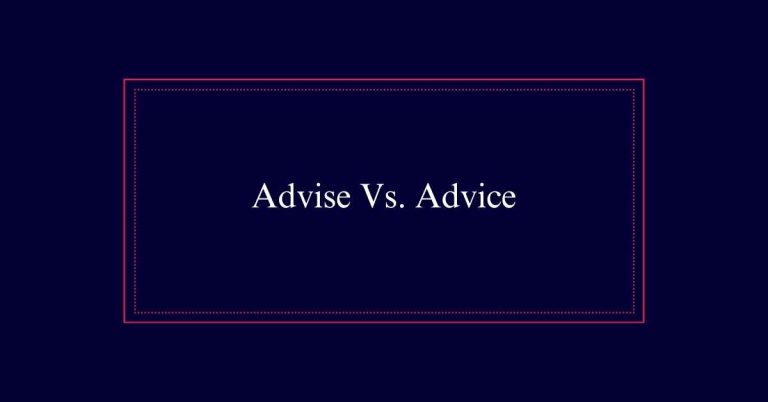How do I apologize for a delayed response?
When it’s taken a while to reply, start by acknowledging the delay and apologizing sincerely. Say, “Thanks for your patience,” or “I’m sorry for the late reply.” Appreciate their message and show you value their effort. Address their points directly, and maybe ask a question to keep the conversation going. If it’s a non-urgent email, know that it’s okay to take a bit longer, but try to avoid long waits by setting reminders. Offering a quick note if you need more time shows you respect their message.
Reconsider the Apology
In today’s fast-paced world, instant email responses aren’t always feasible. Not all emails need an immediate reply, especially if they aren’t urgent. It’s okay to assume that your contacts will understand a delayed response in non-critical situations.
Instead of apologizing for being late, focus on the content of your email. By doing this, you keep the conversation productive. Respond quickly to urgent emails, but it’s acceptable to delay less pressing ones. You don’t need to say sorry every time you’re late. Just get to the point and provide the necessary information.
This approach saves time and shows you value the conversation’s substance over formalities.
Show That You Care
Acknowledge the sender’s effort and show you appreciate their message. Let them know their email wasn’t overlooked. Say something like, “Thanks for reaching out” or “I appreciate your patience.” This shows you value their time.
Next, redirect the conversation back to their interests. Ask questions or comment on their points. Show genuine interest in what they said.
Here’s a simple table to help you:
| Thank Them | Redirect the Focus | Show Interest |
|---|---|---|
| “Thanks for your email.” | “You mentioned…” | “I found your idea intriguing.” |
| “I appreciate your patience.” | “About your question…” | “Tell me more about…” |
| “Thanks for waiting.” | “Regarding your point…” | “I’d love to hear more.” |
Own the Delay
Own up to the delay and apologize sincerely for not responding sooner. Acknowledge the delay right away. Say you’re sorry and mean it. This shows you respect the other person’s time.
Be direct and clear about why you didn’t respond. Maybe you were swamped with work or had personal issues.
After apologizing, offer to help. Ask if there’s anything you can do to make up for the delay. Provide solutions or assistance to show you’re proactive. Don’t make excuses, just explain briefly. Focus on fixing the situation.

Avoid Long Waits
Don’t let people wait too long for an important response. Quick replies show respect and keep conversations moving. If you know you’ll be delayed, send a brief note acknowledging the message. This lets them know you haven’t forgotten. Use tools like email filters and reminders to prioritize urgent emails. Responding promptly can prevent misunderstandings and maintain trust.
Set aside specific times to check and reply to emails. This habit helps you stay on top of things. If an immediate answer isn’t possible, give a timeline for when they can expect a full response. Remember, communication is key. Keeping others informed about your availability and expected response time shows you value their time and communication.
Utilize Email Forgiveness Day
Mark April 30th on your calendar for Email Debt Forgiveness Day to catch up on delayed responses without feeling rude. This day is perfect for addressing those overdue emails. Use it to clear your inbox and ease your mind. You don’t have to feel bad about the delay; everyone understands.
Here’s how to approach it:
| Task | Action |
|---|---|
| Identify backlog | List all pending emails |
| Prioritize | Sort by importance |
| Draft responses | Write concise, polite replies |
| Send | Dispatch all emails on April 30th |
Make sure to use this day to reconnect and clear your email obligations. It’s a chance to start fresh. Don’t wait—embrace Email Forgiveness Day and feel the relief.
Focus on Content
When responding to delayed emails, focus on the core message rather than dwelling on the delay. Address the main points immediately. This shows you value the conversation.
Concentrate on providing useful information and actionable steps. A concise, relevant reply is more effective than a lengthy apology.
Here are some tips to keep your content engaging:
- Be direct: Get straight to the point.
- Offer value: Provide useful insights or solutions.
- Stay positive: Keep the tone upbeat and constructive.
- Close with care: End on a thoughtful note.
Acknowledge Non-Urgent Emails
Even for non-urgent emails, a brief acknowledgment shows you value the sender’s time. Don’t ignore these messages. A quick, “Thanks for your email. I’ll get back to you soon,” can make a big difference. It shows you’ve seen the message and plan to respond. This small effort can help maintain good relationships.
Ignoring non-urgent emails might make the sender feel unimportant. Even if the matter isn’t pressing, they’ve taken the time to write to you. Show respect for that effort. It’s a simple way to keep communication lines open and positive.
Offer Solutions
If there’s been a delay, it’s important to acknowledge it and take proactive steps to make up for lost time. By offering solutions to move forward, you demonstrate your commitment to resolving the issue and building trust with all parties involved.
- Provide alternatives: Suggest different ways to achieve the goal.
- Prioritize the task: Make it clear that you’re now giving it top priority.
- Offer extra help: extend support beyond what was initially required.
- Set clear timelines: Provide a specific timeframe for completing the task.
These actions not only address the delay but also show that you care about finding a resolution. By focusing on constructive solutions, you can improve the situation for everyone involved.
Frequently Asked Questions
How Can I Improve My Email Response Time Overall?
To improve your email response time, prioritize urgent emails and set specific times to check and respond to your inbox. Use templates for common replies and keep your messages clear and concise. Stay consistent.
Are There Tools to Help Manage Email Backlogs Effectively?
Yes, there are tools to help you manage email backlogs effectively. Use apps like Boomerang, SaneBox, or Spark. They organize, prioritize, and schedule your emails. Set reminders and automate responses to keep on top of things.
What Strategies Can I Use to Prioritize Urgent Emails?
Use email filters to flag urgent messages. Check emails at set times daily. Prioritize by sender and subject line. Set reminders for follow-ups. Mark less critical emails for later. Stay organized and stay on top.
How Do I Set Realistic Expectations for Email Response Times With My Contacts?
Set clear email response expectations. Let contacts know you prioritize urgent emails but may delay non-critical ones. Communicate your typical response time and stick to it. This builds trust and understanding, ensuring smooth communication.








